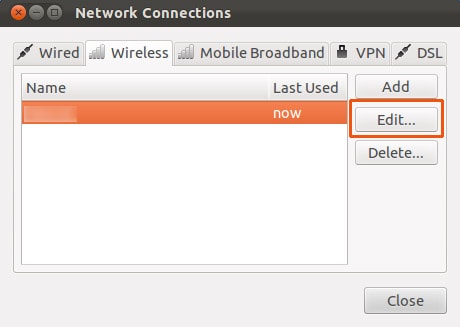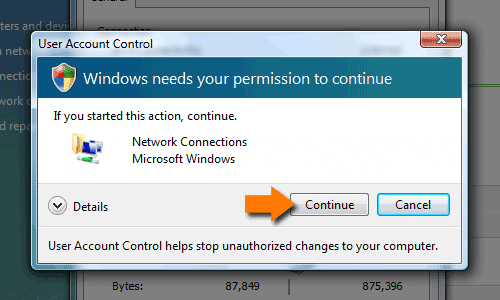Change Dns Server Windows Vista
Ralph77 in TCP Templates for Windows Server 2019 – How to tune your Windows Server Transports (Advanced users only ) on HiI have a strange problem. An incomming on port 80 connection from the intrernet is assigned to the 'DatacenteCostum' TCPIP template. How to change DNS on Windows Vista 1. First things first, you should click on the Start button and then click the Control Panel. Choose Network and Internet then click Network and Sharing Center. Now you should click on Manage network connections. Now you should choose Local Area. Windows 10 64 bit / Windows 10 / Windows Server 2012 / Windows 2008 64 bit / Windows 2008 / Windows 2003 / Windows 8 64 bit / Windows 8 / Windows 7 64 bit / Windows 7 / Windows Vista 64 bit.
My Hyper-V hosts are Dell PowerEdge R520, utilizing Broadcom NetXtreme 1Gb NICs and running Server 2008R2 SP2. Firmware/drivers all up to date. The issue has only ever existed on the guest VMs, never the host nor any other baremetal box. There's this little thing called Virtual Machine Queues. This topic describes the Domain Name System (DNS) client functionality that is new or changed in Windows 10 and Windows Server 2016 and later versions of these operating systems. Updates to DNS Client. DNS Client service binding: In Windows 10, the DNS Client service offers enhanced support for computers with more than one network interface.
Change DNS Helper is a free tool which makes it easier to manage your preferred DNS servers, possibly improving performance and security, and giving access to sites you couldn't reach normally.

Switching your DNS requires a minimum of 3 steps: choose your adapter, select a DNS server (Google, OpenDNS, Comodo, Yandex, Norton and assorted others are supported) and click 'Change DNS'.
Unusually, you can also choose to set your DNS server for IPv4 and IPv6 connections separately.
There are options to reset, back up and restore your DNS settings, handy if the program hasn't worked as expected.
Need support for another server? You can add whatever you need by editing an INI file. It's a simple format: name= and the IP addresses, like--
[IPV4]
US - Google Public DNS=8.8.8.8,8.8.4.4
US - Comodo Secure DNS=8.26.56.26,8.20.247.20
There are other buttons, some of which carry out useful tasks (flush DNS cache, renew IP address), but others are a little more ad-related. Clicking 'Hide IP Address' or 'Fast VPN Service' opens the Hide My Ass site, for instance, and it's probably no coincidence that there's also a 'Hide My Ass' ad on one of the tabs. But don't let this put you off. The program doesn't install any adware, its own ad isn't visible on the main interface, and once you learn which buttons open the website you need never click on them again.
Verdict:
There are lots of these DNS switchers around, but Change DNS Helper stands out for its IPv4/ IPv6 support, and its editable DNS list is welcome too.
You might have heard about the open dns service which gave more security and more speed while browsing the web. Now Google too has come up with their new Google Public DNS. This service gives you more speed while browsing and also protects you from DNS spoofing attacks and from various other security threats. This one too look promising like the open dns.
Dns Server Settings Windows 10
If you don’t under stand what’s the use of it then just take a look at this.
As web pages become more complex and include more resources from multiple origin domains, clients need to perform multiple DNS lookups to render a single page.
Dns Server Address Windows 10
The average Internet user performs hundreds of DNS lookups each day, slowing down his or her browsing experience. As the web continues to grow, greater load is placed on existing DNS infrastructure.DNS lookups can become a significant bottleneck in the browsing experience. Whenever a client needs to query a DNS resolver over the network, the latency introduced can be significant, depending on the proximity and number of nameservers the resolver has to query (more than 2 is rare, but it can happen).


How to Change DNS Server to Google Public DNS in Windows XP, Vista and 7
- Go the Control Panel.Click Network and Internet, then Network and Sharing Center, then Manage network connections.
- Select the connection for which you want to configure Google Public DNS. For example: To change the settings for an Ethernet connection, right-click Local Area Connection, and click Properties.
- To change the settings for a wireless connection, right-click Wireless Network Connection, and click Properties.
- If you are prompted for an administrator password or confirmation, type the password or provide confirmation.
- Select the Networking tab. Under This connection uses the following items, click Internet Protocol Version 4 (TCP/IPv4) (In Windows Vista and 7), and then click Properties.
- Click Advanced and select the DNS tab. Select Use the following DNS server addresses.
Replace those addresses with the IP addresses of the Google DNS servers: 8.8.8.8 and 8.8.4.4.
Restart the connection you selected in step 3.
Xp users just need to take the Open Internet Protocol TCP/IP Settings.
Setting Google Public DNS in Mac OSX
- From the Apple menu, click System Preferences, then click Network. If you are prompted for an administrator password or confirmation, type the password or provide confirmation.
- Select the connection for which you want to configure Google Public DNS. For example:
To change the settings for an Ethernet connection, select Built-In Ethernet, and click Advanced. - To change the settings for a wireless connection, select Airport, and click Advanced. Select the DNS tab.
- Click + to replace any listed addresses with, or add, the Google IP addresses at the top of the list: 8.8.8.8 and 8.8.4.4.
Click Apply and OK.
[via Google Code]
Dont Forget To Comment Down Your experiences after New DNS Servers from google.